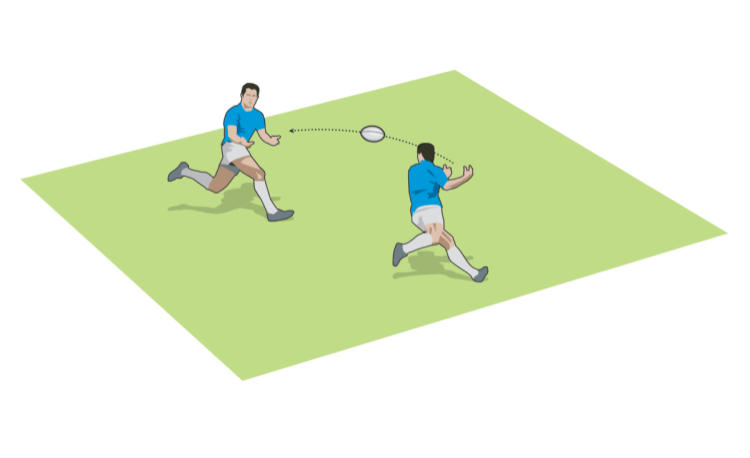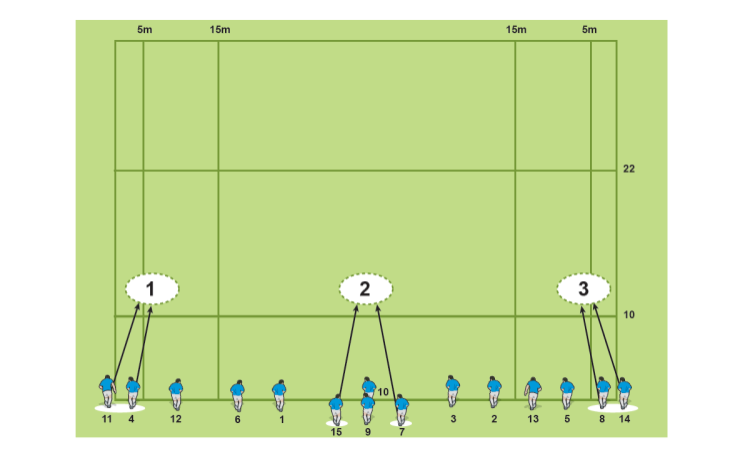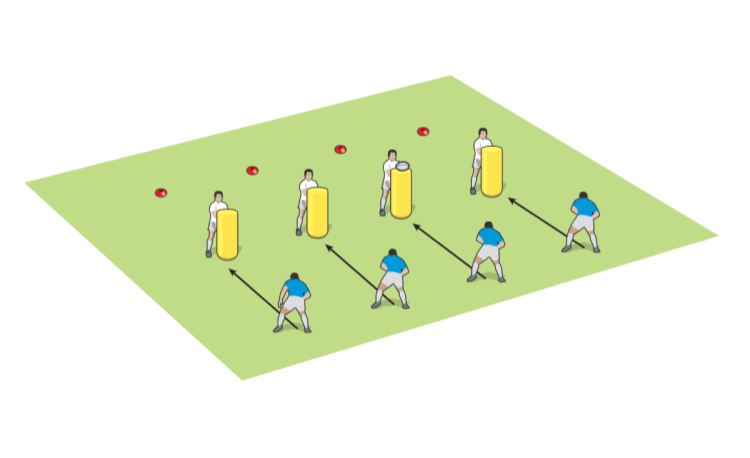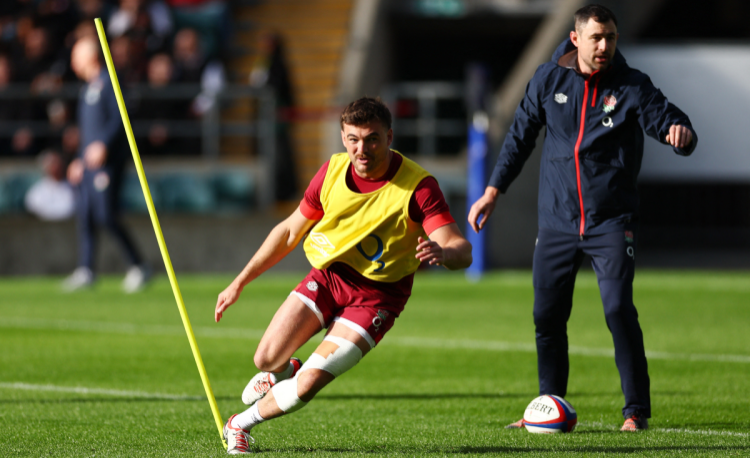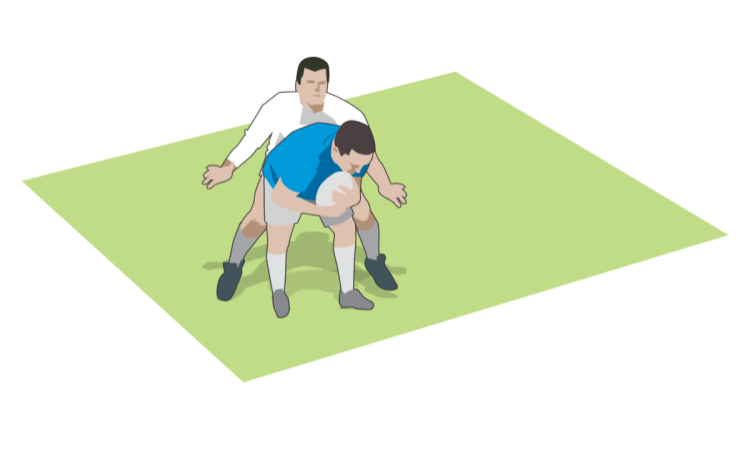You are viewing
1 of your 2 free articles
Double up the tip pass
A tip pass is a short flat pass where the passer can immediately support the receiver as they go into contact. It can unbalance the defence because of the change of focus and helps dent the defence.
Creating 2 v1 mismatches is just as effective in close as in space. The power of two is a powerful weapon.

In the 5m square, the attacking pair enter from opposite corners. The ruck pad holders stand close together.

The ball carrier runs at one of them and, in the last 2m, passes to the supporting player who runs onto the ball at pace and aims to smash between the two defenders who resist. Players attack and defend in different partnerships in 30-second sets.
DEVELOPMENT
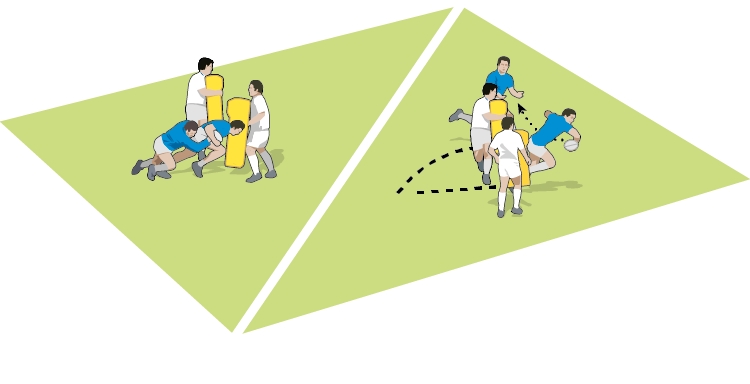
Develop with the initial ball carrier following the supporter into contact and driving him from behind to add extra power.
TECHNIQUE
- The supporting player runs faster than the ball carrier to create huge momentum and get past their team-mate when the contact area is reached.
- If they do not smash through, the passing player places their shoulder behind the buttock of the driving player, who must be no higher than waist height of the defender and driving upwards in contact.
- Both attackers remain on their feet and use small, fast steps.
Related Files
Newsletter Sign Up
Coaches Testimonials

Gerald Kearney, Downtown Las Vegas Soccer Club

Paul Butler, Florida, USA

Rick Shields, Springboro, USA

Tony Green, Pierrefonds Titans, Quebec, Canada
Subscribe Today
Be a more effective, more successful rugby coach
In a recent survey 89% of subscribers said Rugby Coach Weekly makes them more confident, 91% said Rugby Coach Weekly makes them a more effective coach and 93% said Rugby Coach Weekly makes them more inspired.
Get Weekly Inspiration
All the latest techniques and approaches
Rugby Coach Weekly offers proven and easy to use rugby drills, coaching sessions, practice plans, small-sided games, warm-ups, training tips and advice.
We've been at the cutting edge of rugby coaching since we launched in 2005, creating resources for the grassroots youth coach, following best practice from around the world and insights from the professional game.







